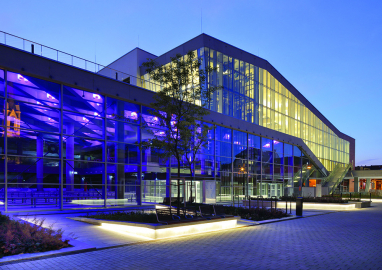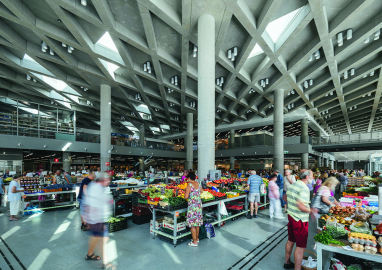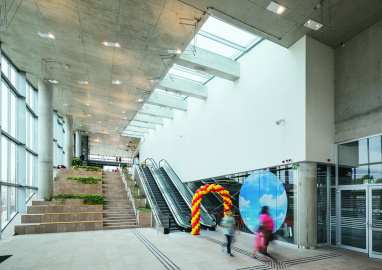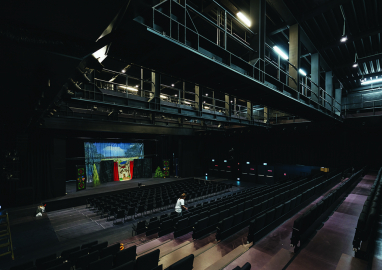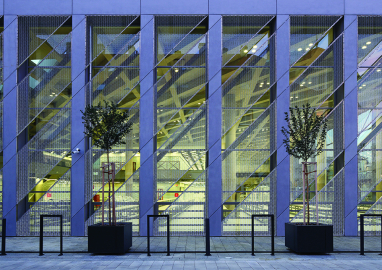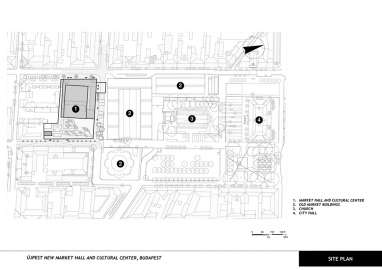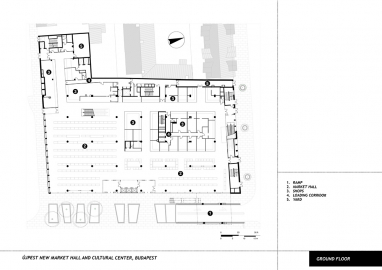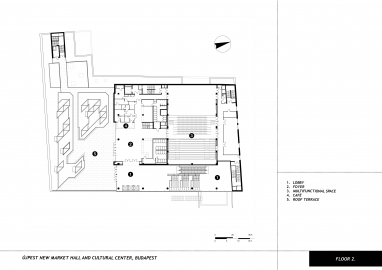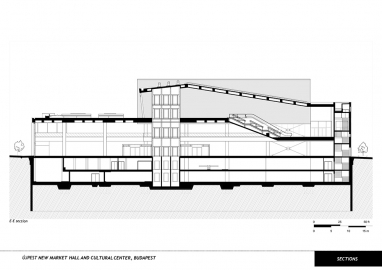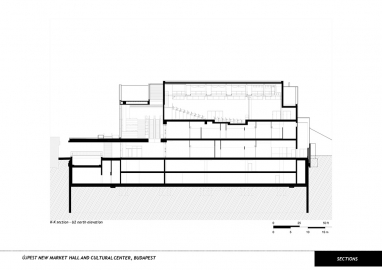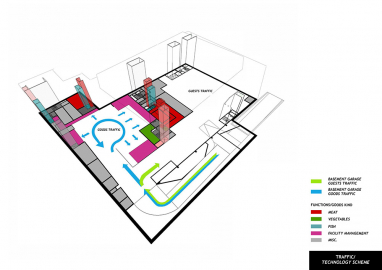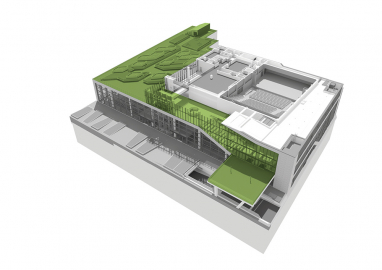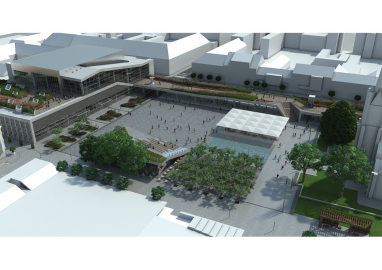Market Hall and Event Center of Újpest
The market place, besides the city hall and the church, has always been the most important part of the center of the 4th district. However, from the 1970s on, the service area of the introverted late-modern market buildings occupied the public space of St. Stephen Square. The purpose of the transformation is to give this space back to pedestrians and events.
The basis of the forthcoming demolition of obsolete buildings and the reconstruction of the public square is a New Market Hall located on the western border of the square with a two-story shopping area. Loading and storage areas, and an underground garage were hidden below the Market Hall with connections provided by elevators. Above the Market Hall, a two-story cultural center was established, which offers spiritual food besides the physical one. The transformation of the surrounding infrastructure (such as eliminating transit traffic) and the transparent building allows the prospective outdoor public space to be continued within the hall and to function together. This "compactness" and the mixed use extends the operation of the building over time.
The “openness” was a major factor in the design program both visually (with glass facades) and in a contextual way (with all-direction access), and it wants to be clearly transparent that is to say „honest”. The building wants to expose all its systems and functions - whether it is traffic (panoramic elevators), or a support structure (primarily the exposed concrete structures and secondarily steel elements). The building performs and at the same time is the framework for events: it is a neutral, monochrome frame of a very “colourful” market and culture. Therefore, the complex owns a unified character, subtle tones, and emphasized light conditions.
Showing the operation of the building is also desirable because the upper levels have to be attractive to counteract their obvious disadvantageous position. Therefore, in addition to programmatic considerations, a visually accentuated lobby with high ceilings was placed in front of the square that is to be renovated. Later on, a promenade with green areas on the first-floor and a rooftop garden on the top of the market hall will be connected to the lobby.
The triplet of these spaces is opened and has a uniform appearance.
The consistency of program, structure and appearance can be found in the exposed concrete support structures, in the corresponding fiber-cement elevation cladding, in the natural aluminum structures and surfaces, and in the independent, floating, closed, glittering white cube of the cultural centre. In the latter space, wooden wall panels, wall-to-wall carpets, acoustic suspended ceilings "soften" the strict and lean system, while the multifunctional grand hall provides a black-box frame for events.
The concrete itself is a feature element. The rigor of the main structural grid is dynamized by the diagonal patterned lattice of the ceiling of the market hall, which can be perceived even from outside.
The scale of the building fits in the surrounding enclosed small-town block structure and height. Living in symbiosis with the context, the cooling-heating system uses waste heat recovered from urban wastewater, the shading system of the exterior light and the control of the LED lighting are automatically synchronized, and graywater is utilised by the building.

